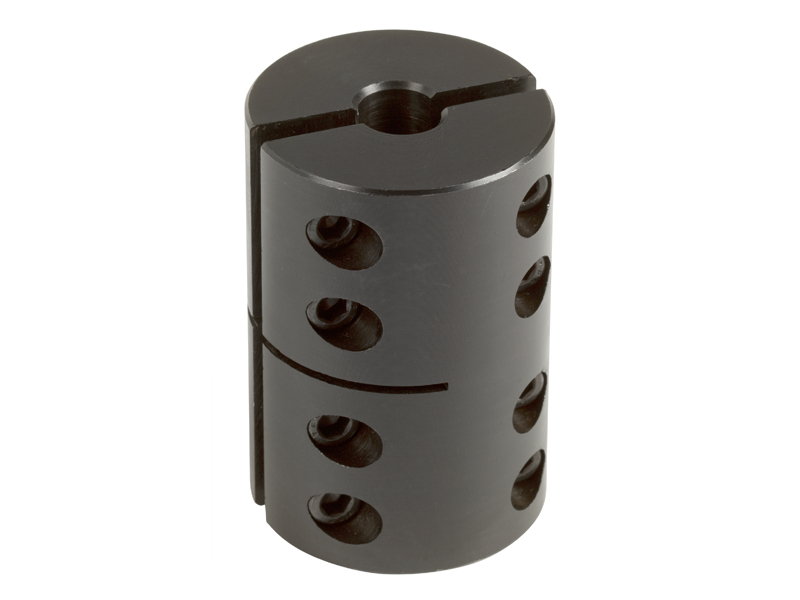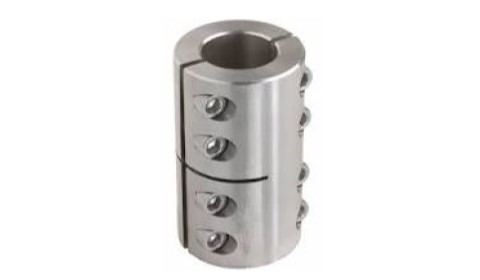Product Description
Building Construction Accessories/Fitting Pedestal Base Fixing Strut Channel/top beam clamp Connection Coupling
Product Description
Building structure connecting coupling are widely used for All kinds/type of buildings, Hotels,office buildings,residential buildings, Bridges and other construction projects,It solid,and has the function of quakeproof,Reduce vibration and buffering for the construction.
Building structure connecting coupling produced by our factory is made of carbon steel, ductile iron, stainless steel by casting and forging.According for the different requirements of the customers,providing fixed connection coupling of Corresponding model.
Building structural parts include coupling, strut channel connection rod, pipe clamp.Different construction engineering use Different model building structural parts,Specific structural parts shall be provided by the customer construction drawings,Our engineers will follow the construction drawings,Making the corresponding structural parts quotation.
Function:Designed for bracing pipe against sway and seismic disturbance. The pipe attachment
component of a sway brace system used in conjunction with a UTT Manufacturing structural attachment fitting, and joined together with a bracing pipe element forms a complete sway brace assembly. Sway brace assemblies are intended to be installed in accordance with NFPA 13 and the manufacturer’s installation instructions.
Type:Sprinkler Pipe Sch 10,Sch 40,GB/T 3091,JIS G3454
Size:One size fits braced pipe up to 8″,with 1/2″bolt hole for structure. Material: Ductile iron QT450
Finish:Electro- galvanized
Approvals:UL FM CE
Installation Instructions
Product feature
1.Our products pass UL,FM industry certification standards.
2.According to the engineering drawings provided by the customer, our engineers will customize the special construction structural parts/accessories for the customer
3.Construction structural parts by our factory,it is made of carbon steel,ductile iron,stainless steel by casting or forging,or also can customized according the customer requirement.
4.Products made by our factory,its surface is treated with hot dip galvanizing process, anti-corrosion, beautiful and smooth, long service life.
Product show
Application field
Case show
Company Profile
Utterly is a high-tech private enterprise integrating product design, research and development, production, sales and installation.The company has absorbed the advanced concepts of similar products at home and abroad, combined with the characteristics of domestic mechanical and electrical engineering equipment installation, introduced advanced manufacturing and testing equipment, and creatively launched the “construction mechanical and electrical equipment anti-seismic support crane rack system and prefabricated support system” product with more than a dozen patents and new independent intellectual property rights.
Adhering to the business philosophy of “innovation wins sustainable development, and technology creates a safe world”,Utterly Intelligent Technology Co.,Ltd. is based on the domestic market, and goes to the world.
The company’s products are the first to pass the strict US UL certification, FM certification,EU CE certification and national inspection agency testing.Utterly currently provide the following products/Service to our CHINAMFG customers,especially FM/UL Seismic Sway Bracing:
1. Utterly Products:
Seismic Sway Bracing.Structural Attachment, Quick Bracing Clamp,Pipe Clamp,Beam Adapter
Swivel Hanger, Clevis Hanger, Beam Clamp
Other Customized Products
2. One-Stop Procurement Service
The company has a professional team in product design, mold making, process innovation, product sales, etc., and has established a complete system from CAD, 3D, BIM design to product production and testing, providing customers with professional pre-sale, in-sale and after-sale services, etc. System-wide technical advice and services.
3. OEM/ODM Service
The products are exported to Europe, America, South America, the Middle East, Southeast Asia and other countries.The quality has been well received by customers.
This is general company info. For the latest and most complete products, news, updates and additional information, please contact us. We invite you to work and grow together.
| Product Name | Construction structural component/accessories |
| Constitute | Coupling/Profile steel Connecting support rod/pipe clamp/hanger |
| Craftsmanship | Laser Cutting,Hydraulic forging |
| Product material | Carbon steel, ductile iron, stainless steel,Customize |
| Approval Standards | FM,UL Certificate |
/* January 22, 2571 19:08:37 */!function(){function s(e,r){var a,o={};try{e&&e.split(“,”).forEach(function(e,t){e&&(a=e.match(/(.*?):(.*)$/))&&1
Are There Any Maintenance Requirements for Clamp Couplings to Ensure Their Longevity?
Yes, like any mechanical component, clamp couplings require regular maintenance to ensure their longevity and optimal performance. Proper maintenance can help prevent premature wear, reduce the risk of failure, and extend the service life of the coupling. Here are some essential maintenance practices for clamp couplings:
- Regular Inspection: Perform visual inspections of the clamp coupling regularly to check for signs of wear, damage, or misalignment. Look for cracks, corrosion, or any deformation in the coupling components.
- Lubrication: Some clamp couplings may require periodic lubrication to reduce friction between moving parts. Check the manufacturer’s guidelines for the appropriate lubrication schedule and use the recommended lubricant.
- Bolt Tightening: Ensure that all the bolts and screws securing the clamp coupling are properly tightened according to the manufacturer’s specifications. Loose bolts can lead to misalignment and coupling failure.
- Alignment: Regularly check the alignment of the connected shafts. Misalignment can cause excessive stress on the coupling and lead to premature wear. If misalignment is detected, it should be corrected promptly.
- Environmental Protection: If the clamp coupling is used in harsh environments, take measures to protect it from dust, debris, and corrosive substances. Use suitable covers or guards to shield the coupling from external contaminants.
- Load Monitoring: Be aware of the operating conditions and load requirements of the machinery. Excessive loads or shock loads can impact the performance of the coupling. Avoid exceeding the coupling’s specified torque and speed limits.
- Regular Replacement: Even with proper maintenance, clamp couplings have a finite service life. It is essential to follow the manufacturer’s recommendations for replacing the coupling at the end of its expected lifespan or if any significant wear or damage is detected.
By following these maintenance practices, operators can ensure that the clamp couplings remain in good condition and continue to function reliably. Regular maintenance not only extends the coupling’s lifespan but also enhances the safety and efficiency of the entire mechanical system. Always refer to the manufacturer’s guidelines and instructions for the specific maintenance requirements of the clamp coupling model used in the application.
Comparison of Clamp Couplings with Jaw Couplings and Bellows Couplings
Clamp couplings, jaw couplings, and bellows couplings are all common types of couplings used in mechanical power transmission. Each type has its unique design and features, making them suitable for different applications. Here’s a comparison of these couplings:
- Design:
– Clamp Couplings: Clamp couplings consist of a split hub with screws that tighten around the shafts, providing a secure and balanced connection.
– Jaw Couplings: Jaw couplings have two hubs with curved jaws that interlock to transmit torque. They can accommodate a certain degree of misalignment.
– Bellows Couplings: Bellows couplings use a thin-walled metallic bellows to transmit torque while compensating for misalignment. They are typically more flexible than clamp couplings and jaw couplings.
- Misalignment:
– Clamp Couplings: Clamp couplings can handle a small amount of angular misalignment but are better suited for applications with precise alignment.
– Jaw Couplings: Jaw couplings can accommodate angular and axial misalignment but have limitations on radial misalignment.
– Bellows Couplings: Bellows couplings can handle higher levels of misalignment, including angular, radial, and axial misalignment.
- Vibration Damping:
– Clamp Couplings: Some clamp couplings can provide a degree of vibration damping due to their material properties, but they are not specifically designed for this purpose.
– Jaw Couplings: Jaw couplings have some vibration absorption capabilities due to the flexibility of the elastomeric spider element.
– Bellows Couplings: Bellows couplings are known for their excellent vibration damping characteristics, making them suitable for applications where vibration isolation is critical.
- Backlash:
– Clamp Couplings: Clamp couplings typically have minimal backlash, providing precise torque transmission.
– Jaw Couplings: Jaw couplings have a small amount of backlash due to the clearance between the jaws and the spider element.
– Bellows Couplings: Bellows couplings have negligible backlash, making them suitable for applications requiring high precision.
- Temperature and Environment:
– Clamp Couplings: Clamp couplings are generally suitable for a wide range of temperatures and environments, depending on the material used.
– Jaw Couplings: Jaw couplings are versatile and can operate in various conditions, but their elastomeric elements may have temperature limitations.
– Bellows Couplings: Bellows couplings can withstand high temperatures and are often used in demanding environments.
- Cost:
– Clamp Couplings: Clamp couplings are often more cost-effective compared to jaw couplings and bellows couplings.
– Jaw Couplings: Jaw couplings are generally affordable and offer a good balance between cost and performance.
– Bellows Couplings: Bellows couplings are more expensive than clamp couplings and jaw couplings due to their precision and high-performance characteristics.
When selecting a coupling, it is essential to consider the specific requirements of the application, including torque, misalignment, precision, and environmental factors. Consulting with coupling manufacturers or engineers can help in choosing the most suitable coupling for a particular mechanical system.
Industry Standards and Certifications for Clamp Couplings
There are several industry standards and certifications that may apply to clamp couplings, depending on their design, materials, and intended applications. These standards ensure that the clamp couplings meet specific requirements and quality benchmarks, providing confidence in their performance and reliability.
Some of the commonly recognized standards and certifications for clamp couplings include:
- ISO 9001: This is a quality management system standard that sets requirements for the design, development, production, and service of products. Manufacturers of clamp couplings may obtain ISO 9001 certification to demonstrate their commitment to quality and continuous improvement.
- ASME B29.1: This standard is specific to roller chain drives and includes guidelines for chain coupling dimensions and interchangeability.
- AGMA 9002-C16: This standard, developed by the American Gear Manufacturers Association, provides guidelines for inspection practices of flexible couplings, which may include clamp couplings.
- API 671: This standard is specific to couplings used in petroleum, chemical, and gas industry services. It sets requirements for special-purpose couplings, such as those used in compressors and pumps.
- DNV GL Type Approval: The Det Norske Veritas Germanischer Lloyd (DNV GL) provides type approval certification for couplings used in maritime and offshore applications. This certification ensures that the coupling meets specific quality and safety standards for marine use.
- ATEX: For couplings used in explosive atmospheres, the ATEX directive sets requirements to prevent ignition sources and ensure safety. ATEX compliance may be necessary in certain industrial settings.
It’s important to note that not all clamp couplings require certification under these standards, as the applicability depends on the specific industry and use case. Additionally, some manufacturers may adhere to their own internal quality control measures without seeking external certifications.
When selecting clamp couplings for particular applications, it’s essential to consider whether specific industry standards or certifications are necessary. Consulting with suppliers or coupling manufacturers can help ensure that the chosen clamp couplings meet the required quality and safety standards for their intended use.
editor by CX 2024-03-14




